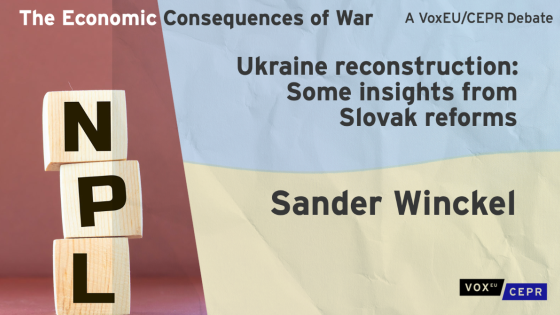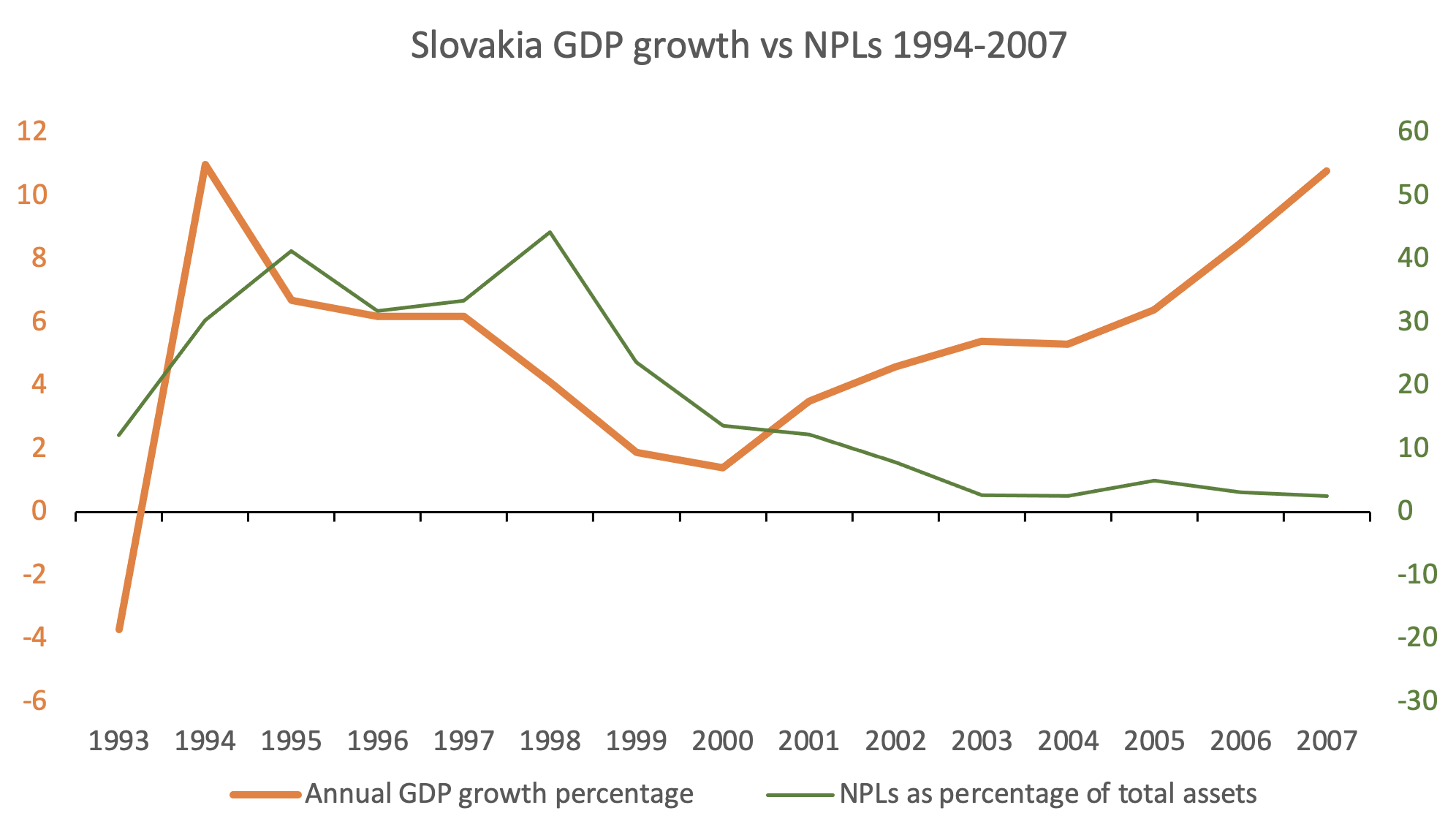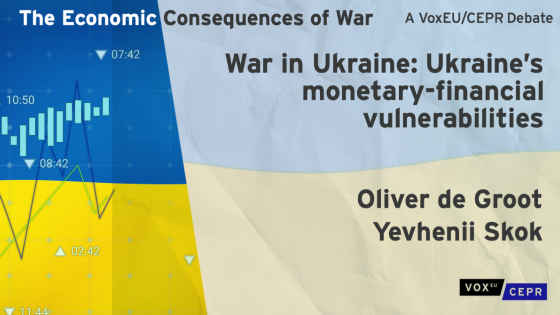The financial sector is playing an important role in the reconstruction and development plans for Ukraine, and it might be interesting to have a look at the successful reform of the banking sector in neighbouring Slovakia, a country which had similar experiences with the transition from centrally planned economy to market economy.
During the government of the populist and autocratic Vladimir Mečiar (1992-1998), Slovakia became isolated and excluded from negotiations to enter the EU, OECD, and NATO, and was going to lean more towards Russia. The ownership of lucrative enterprises was transferred to individuals with close links to the ruling parties at symbolic prices, who then stripped these companies of their assets. This system, together with other economic mismanagement, weak rule of law, a dysfunctional judicial system, and endemic corruption, resulted in a freezing of the economic system and an unsustainable level of company debts. The major banks (in particular VUB and Sporitelňa, with over 50% of the country’s banking assets) held a huge portfolio of classified loans on their books (25% of GDP), bringing them to near insolvency.
In 1998, a broad coalition (from the centre right to reformed communists) took power and set upon correcting this situation. It was the new government’s intention to start with cleaning up the state-owned banks and privatising them, and then to transfer the bad assets to the private sector as soon as possible, in order to restructure the private sector, too. The experiences with government-managed bad asset restructuring in Central Europe had not shown good results and, therefore, it was deemed better to have this handled by the private sector, accompanied by extensive legal reforms. The next year, after a thorough review of the Slovak financial system by the World Bank and the International Monetary Fund (IMF), the government adopted a major reform programme, focusing on a macroeconomic framework, bank restructuring and privatisation, bank regulation and supervision, and enterprise restructuring.
The government prioritised the restoration of the health of the banking and enterprise sector, with technical assistance financed by various donors (EU, USA, UK, and Japan). Within three years, the portfolios of the state-owned banks were reviewed, a bad debt institution, Slovak Consolidation Agency (SCA) set up, and around SKK 110 billion (more than 10% of GDP) of classified loans transferred from the state-owned banks to the SCA.
The two major banks (VUB and Sporitelňa) were recapitalised by the state (with 25% of VUB initially taken up by IFC and EBRD), sold to foreign banks (VUB to the Italian Banca Intesa and Sporitelňa to the Austrian Erste Bank), and SCA started to sell the distressed assets. Also transferred to SCA were other sums due to the government, such as arrears of taxes, customs duties, premiums for health insurance, labour insurance, and pensions, increasing its assets to approximately 15% of GDP. Most SCA assets were claims on bankrupt companies, so it was not surprising that the recovery was below 10%.
In order to create a better environment for the market economy, a number of flanking measures were introduced. The Constitution and central bank law were amended to strengthen the supervisory powers of the National Bank. A new banking law was introduced to increase, inter alia, transparency of relationships, management responsibilities, reporting requirements, accounting treatment, auditing, risk management, and the deposit insurance system. The tax treatment of reserves and provisions was changed. The bank supervision system was strengthened. The legal, regulatory, and institutional framework for bankruptcy was improved. The framework of creditor rights outside bankruptcy was enhanced, inter alia by a comprehensive reform of the collateral regime for secured transactions. The legal framework for corporate governance was ameliorated.
The restructuring and privatisation of the banking sector was very successful, but the enterprise restructuring (apart from companies such as utilities for which strategic foreign investors had been attracted) was more difficult. This was due to a number of factors. The (politically appointed) management of the Slovak Consolidation Agency did not have sufficient experience nor get enough resources to dispose of its assets in a relatively short period (it had over 4,000 debtors in its original portfolio), stalling the reform of still viable companies. The EBRD, which had set up an investment fund to support the restructuring of companies, noted that investments in companies without foreign strategic investors, encountered difficulties due to lack of transparency, good corporate governance, standards of business conduct, managerial know-how, and restructuring skills of management teams (EBRD 2004). Another reason was the legal environment. Although many important legal changes were introduced, and the regulatory and institutional environment was improved, it appeared problematic to implement them. Within the judiciary (not only judges, but also other persons involved in the judicial process, e.g. bankruptcy administrators), there was resistance to these changes, compounded by dubious practices, such as favouring friends or even corruption.
The direct cost of the banking sector restructuring operation was 12% of GDP, but the gains were enormous: an increase of trust of international investors in the business environment, a substantial inflow of FDI in the country, a growing competitiveness, and a big step towards fulfilling the requirements for EU accession. A tangible outcome of the reforms was the enormous inflow of FDI in the automotive sector; through the decisions of PSA and KIA to set up car factories in the country, tens of thousands of jobs were created and Slovakia became the world’s largest producer of cars per capita in 2007.
Figure 1 Slovak GDP growth compared to banks’ nonperforming loans
Sources: World Bank, Eurostat
After the government had restored macroeconomic balances, saved the banking sector, and laid the foundations of a market economy at the end of its first term (in 2002), it introduced a set of deep structural reforms in its next term (without the former communists), including fiscal decentralisation, public finance, tax, welfare, pensions, labour market, healthcare, education, knowledge economy, the judiciary, and anticorruption measures (Mikloš 2014). These reforms were intended to set the country on the path to become a modern European state. In 2004 Slovakia accessed the EU, and at the end of the reform government’s tenure in 2006 it was making sufficient progress to meet the criteria for joining the euro area, which took place in 2009.
Conclusion
Slovakia made the transition from centrally planned to market economy through a ‘big bang’ approach. The restructuring of the banking sector through the radical disposal of bad assets, recapitalising and selling state-owned banks to foreign owners, and creating an enabling environment for private entrepreneurship, proved to be very successful. With the prospect of catching up with other countries and EU accession in mind, the basis for this success was laid by strong political leadership with a clear vision, support of parliament, civil society, donors and international financial institutions, and thorough preparation.
References
EBRD (2004), “Strategy for the Slovak Republic”.
Mikloš, I (2014), “Slovakia: The Latecomer That Caught Up”, in A Aslund and S Djankov (eds.), The Great Rebirth, Peterson Institute for International Economics.




